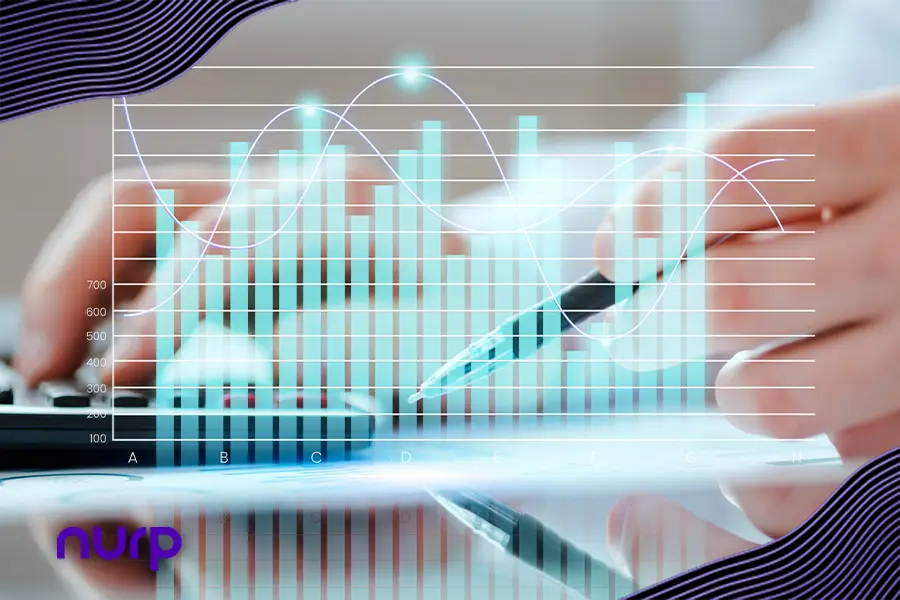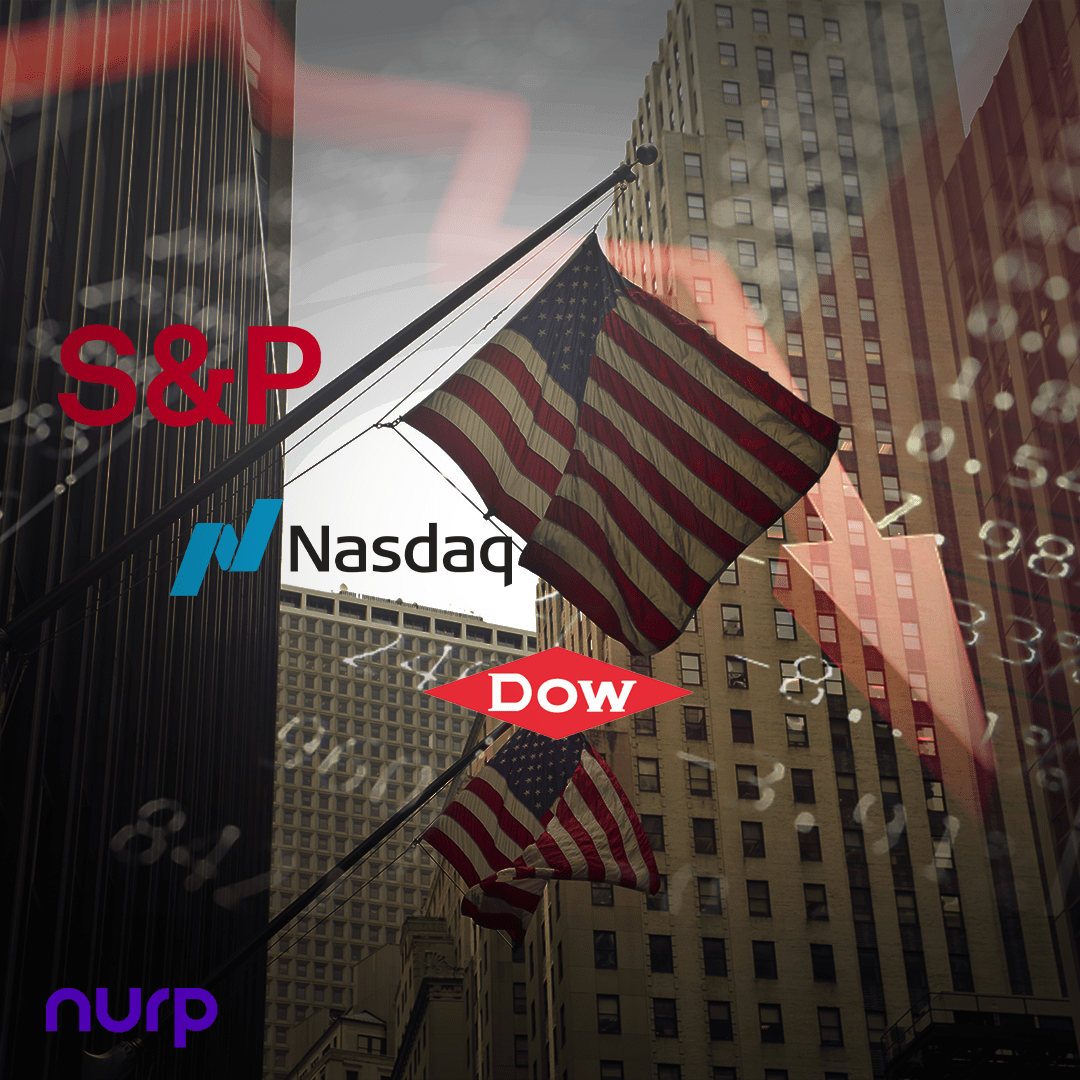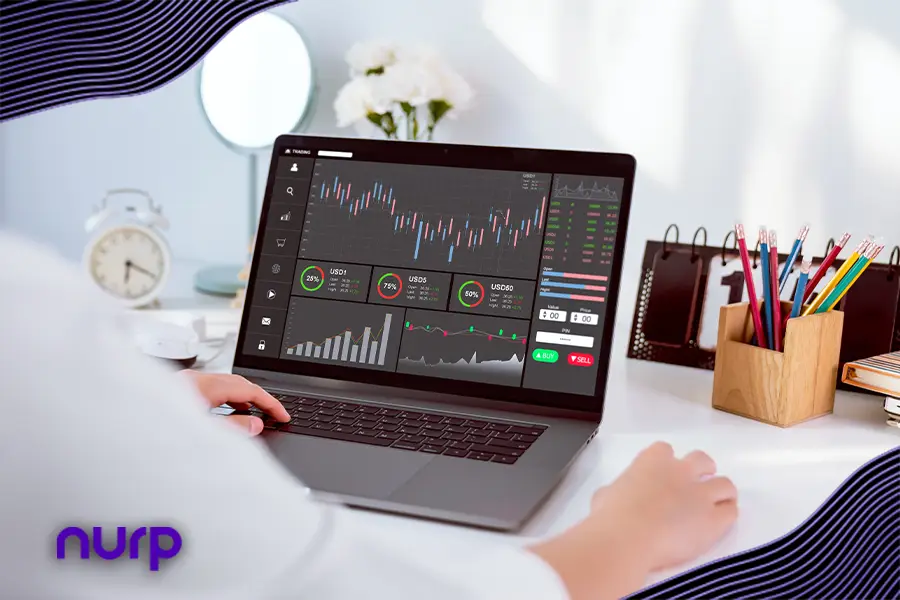Key Takeaways
From its roots in the 1960s to today’s AI-driven models, quantitative trading has revolutionized market analysis and decision-making.
Data analysis platforms, algorithmic trading software, and robust risk management tools form the foundation of successful quantitative trading strategies.
As markets evolve, so do the strategies and technologies used by quant traders, emphasizing the importance of adaptability and ongoing development.
Introduction
Quantitative trading, or “quant trading,” has completely changed how financial markets operate. Instead of relying on gut feelings and experience, quant trading uses math and algorithms to make trading decisions. It involves crunching numbers, analyzing data, and spotting trends that might not be visible to the human eye. The technology and software behind quant trading allow traders to quickly sift through vast amounts of data and execute trades with precision. This article explores the key technology and software that make quant trading possible.
Read More: Introduction to Quantitative Trading: Navigating the World of Algorithms
The Modern Evolution of Quantitative Trading
Quantitative trading has its origins back in the 1960s, around the time Eugene Fama introduced the Market Hypothesis (EMH). This was when folks started diving into mathematical models to make sense of how markets behave. Fast forward to the 1970s and 1980s, and computers became a big deal in financial circles. That’s when the early versions of algorithmic trading systems came into play. In the 1980s and 1990s, Renaissance Technologies, led by math whiz Jim Simons, really started making waves with their quantitative strategies. Then, in the 2000s, high-frequency trading (HFT) took off like a rocket, but not without some bumps – like the 2010 Flash Crash, which made everyone sit up and take notice. Today, quantitative trading is still evolving, especially with the rise of artificial intelligence (AI) and machine learning. These tech advancements are helping traders analyze massive amounts of data and.come up with more clever trading strategies
Core Technologies in Quantitative Trading
Quantitative trading relies on some key technologies to crunch data, build models, and make trades. Let’s break them down:
Data Analysis Platforms: These are like the brains behind quant trading. They use languages like Python and R to analyze massive amounts of data and find patterns that inform trading strategies.
High-Performance Computing: Think of this as the engine powering quant trading. It’s all about super-fast computers that can handle complex calculations in real-time. With these, traders can jump on market opportunities before they disappear.
Algorithmic Trading Platforms: These platforms are like the bridge between quant strategies and the markets. They help automate trades across different assets and exchanges, making it easier for traders to implement their strategies. Plus, they come with handy tools like risk management and backtesting to fine-tune trading performance.
Essential Software for Quantitative Trading
Let’s explore the essential software that helps quant traders navigate the financial markets:
Trading Platforms: These are like the control centers for quant traders. Platforms like MetaTrader and NinjaTrader give traders the tools they need to execute trades, analyze data, and keep an eye on their portfolios. They’re customizable, fast, and packed with features to help traders stay on top of their game.
Backtesting Software: Think of this as a time machine for testing trading strategies. Tools like QuantConnect and Backtrader let traders see how their strategies would have performed in the past. By tweaking parameters and running simulations, traders can fine-tune their strategies before putting them into action in the real world.
Data Analysis Tools: These are the secret sauce behind quant trading. Python libraries like Pandas, NumPy, and SciPy help traders make sense of mountains of market data. With these tools, traders can uncover trends, spot patterns, and even predict future market movements.
Programming Languages and Libraries
On the tech side of quantitative trading are programming languages and libraries. Here’s a rundown:
Python: Think of Python as the Swiss Army knife of quant trading. It’s easy to learn, super flexible, and has a ton of handy tools like Pandas, NumPy, and SciPy. With Python, you can crunch data, run statistical analyses, and even dabble in machine learning.
R: This one’s a favorite among the research crowd. R’s got a boatload of statistical packages that make exploring and visualizing data a breeze. If you’re into digging deep into datasets, R might be your jam.
C++: Alright, buckle up – C++ is for the serious speed demons. It’s not the easiest language to master, but it’s lightning-fast. That’s why you’ll find it powering a lot of high-performance trading systems.
MATLAB: Engineers and researchers swear by MATLAB for its numerical computing prowess. It’s perfect for tinkering with trading algorithms and running simulations before you unleash them into the wild.
At the end of the day, there’s no one-size-fits-all solution. Some quants stick with Python for its simplicity, while others opt for the raw power of C++. Ultimately, choose what works best and gets the job done.
Data Sources and APIs
In the world of quantitative trading, data is king. This section breaks down the key sources and APIs that fuel quant traders’ strategies:
Market Data Providers
Think of them as the information hubs of the financial world. They gather real-time and historical data on stocks, bonds, commodities, and currencies from exchanges and financial institutions. Names like Bloomberg and Refinitiv are go-tos for comprehensive datasets.
Economic Indicators and Fundamental Data
Ever wonder what moves markets? It’s things like GDP growth rates, unemployment figures, and inflation rates. Quant traders keep tabs on these indicators from government agencies and central banks to gauge market sentiment and make informed decisions.
Alternative Data Providers and APIs
Sometimes, one needs to think outside the box. That’s where alternative data comes in, including things like satellite imagery, social media feeds, and web scraping. These unconventional datasets offer fresh insights into consumer behavior and industry trends, and can give quant traders a leg up in the market. Providers like Quandl offer APIs to access and integrate this data into trading strategies, unlocking hidden opportunities in the process.
Read More: The Role of Data in Quantitative Trading
Risk Management Tools: Safeguarding Quantitative Trading Strategies
Effective risk management is key in quantitative trading to minimize losses and protect capital. Here’s a rundown of essential risk management tools used by quant traders:
Position Sizing Algorithms
These algorithms figure out how much capital to allocate to each trade based on factors like account size and volatility. By adjusting position sizes dynamically, traders can manage risk while maximizing portfolio performance.
Stop-Loss Orders
Stop-loss orders automatically sell a security if it hits a predetermined price, limiting potential losses. Traders use them to stick to risk limits and exit positions if the market goes south, helping to protect their capital and maintain discipline.
Portfolio Diversification
Diversifying investments across different assets is a basic risk management strategy. By spreading investments across stocks, bonds, commodities, and currencies, traders reduce exposure to any single risk factor or asset class, aiming for stable returns even in volatile markets.
Stress Testing and Scenario Analysis
Traders simulate various market conditions to test how their strategies hold up under different scenarios, from extreme volatility to liquidity shocks. By identifying weaknesses, they can refine their risk management plans and make informed decisions to protect their portfolios from unexpected market events.
Security and Compliance
Security and compliance are vital in quantitative trading to ensure smooth operations and protect investors’ interests. Here’s a look at key aspects:
Data Security Measures
Quantitative trading relies heavily on data, so data security is crucial. Firms use strong encryption, secure storage, and strict access controls to protect sensitive trading data from unauthorized access or manipulation. These measures maintain data confidentiality, integrity, and availability, reducing the risk of breaches and ensuring compliance with regulations.
Regulatory Compliance
Quantitative trading firms must follow various regulations like MiFID II, GDPR, and SEC rules. They establish robust compliance programs, conduct audits, and maintain records to show adherence to these standards. By complying with regulations, firms mitigate legal risks, build investor trust, and maintain market integrity.
Risk Management
Effective risk management is essential for compliance and protecting investor assets. Firms implement protocols like stress testing and scenario analysis to identify and address operational, financial, and regulatory risks. By managing risks proactively, firms can avoid violations, financial losses, and reputational harm, fostering a culture of accountability.
Conclusion: The Future of Quantitative Trading
Quantitative trading has reshaped how we navigate financial markets. From its inception in the 1960s to today’s sophisticated algorithms, it has been a journey of innovation and adaptation.
Key technologies like data analysis platforms and algorithmic trading tools are the backbone of quantitative trading, helping traders make decisions with speed and precision. Programming languages like Python and R, alongside diverse data sources and APIs, provide the building blocks for quant traders to develop and execute their strategies.
Effective risk management and regulatory compliance are crucial for safeguarding investor interests and market integrity. Through tools like position sizing algorithms and stress testing, traders can mitigate risks and protect capital.
As markets shift, the strategies and tools of quant traders are sure to change too, keeping them ahead of the curve. But let’s not forget that while quantitative trading has its perks, there is no guarantee of profit. Trading is risky, so it is wise to only invest what you can afford to lose, and always play it safe with your money.
Ready to elevate your quantitative trading game? Explore the transformative potential of Nurp’s algorithmic trading software! Download our case study to witness how our tools revolutionize trading success.
The post The Quantitative Trading Revolution: Master the Tools, Dominate the Markets first appeared on Nurp.com.








